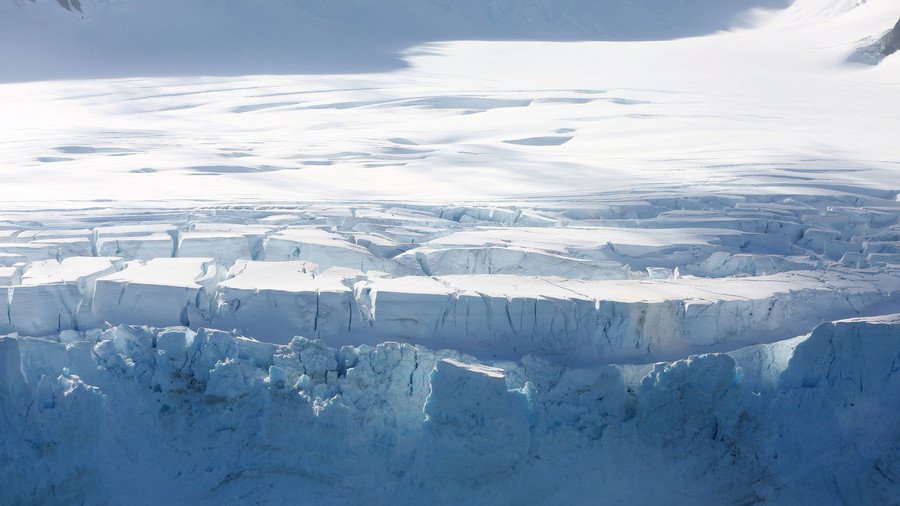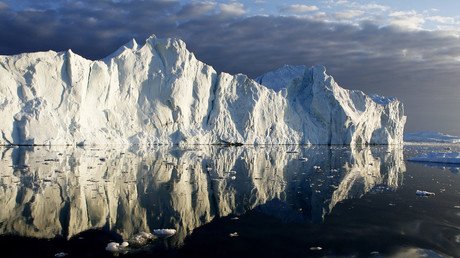Volcanic heat source discovered under melting Antarctic glacier

There is a significant source of volcanic heat deep under the fast-melting Pine Island Ice Shelf in Western Antarctica, researchers found, after stumbling on the evidence while studying heat transfer in the icy continent’s oceans.
The Pine Island glacier is one of the biggest ice flows in Antarctica and is also among the most affected by melting. Big chunks of ice have been ‘calving’ off it on regular basis since the 2000s, with an iceberg about the same size as Washington DC breaking away last September. While warm ocean currents are the main cause for the melting, there are other factors, including heat coming from a volcanic source under the glacier, according to a new study published in the journal Nature Communications.
This part of Antarctica sits atop a volcanic ridge. Previous studies suggested an eruption in this general area about 2,200 years ago. Apparently, there still is significant volcanic activity underneath kilometers of ice.
The authors of the paper discovered this in 2014 when they were sampling water off Western Antarctica from the RRS James Clark Ross, an icebreaker operated by the British Antarctic Survey.
“We were looking to better understand the role of the ocean in melting the ice shelf,” Assistant Professor Brice Loose of Newport, the lead author, said. “I was sampling the water for five different noble gases, including helium and xenon. I use these noble gases to trace ice melt as well as heat transport.”
But then Loose, a chemical oceanographer at the Graduate School of Oceanography at the University of Rhode Island, along with five other scientists, found what they first believed to be bad data: High concentrations of the rare isotope Helium-3. On earth it is mostly encountered in the mantle, the part of the planet right under the crust. When the readings collected in other parts of the ocean showed similarly high concentrations of Helium-3, the researchers concluded that it came with meltwater from under the ice shelf.
“The discovery of volcanoes beneath the Antarctic ice sheet means that there is an additional source of heat to melt the ice, lubricate its passage toward the sea, and add to the melting from warm ocean waters,” Professor Karen Heywood, from the University of East Anglia at Norwich in the UK and the chief scientist with the expedition, explained. “It will be important to include this in our efforts to estimate whether the Antarctic ice sheet might become unstable and further increase sea level rise.”
READ MORE: Ocean floors sinking under weight of melting glaciers – study
The team estimates that the amount of volcanic heat generated under the Pine Island Ice Shelf is about half of that coming from the active Grimsvötn volcano on Iceland and is released about 50 to 250 meters below the ocean level. The estimate may be lower than the actual amount, because Helium-3 indicates only convective heat transfer, one of several ways thermal energy may be exchanged, they note.
Loose, however, warned against overstating the impact of volcanic activity on glacial melting: “Climate change is causing the bulk of glacial melt that we observe, and this newly discovered source of heat is having an as-yet undetermined effect, because we do not know how this heat is distributed beneath the ice sheet.”
If you like this story, share it with a friend!















